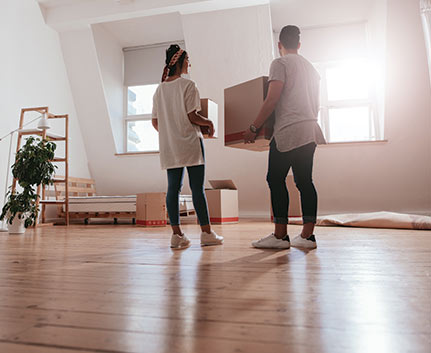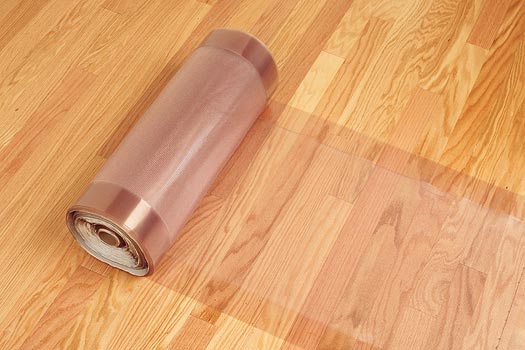Back to Maintenance & Care
How to Protect Wooden Floors During Renovation – Tips & Aftercare

Right now, dozens of people across the country are planning or already carrying out a home refurbishment or renovation project. And as you can expect, when upgrading, repairing, or improving a property, there are countless details to think about. In the middle of this process, one important element often gets overlooked – how to protect your wooden floor. That beautiful, expensive floor you invested in just a few years ago can be at risk of scratches, stains, and serious damage if left unprotected. If you want to learn how to safeguard your floors during renovation, read on.
No matter if you are modernising a newly built home or fully refurbishing an older property, wooden flooring deserves special care. Without proper precautions, renovation projects can quickly take a toll on the surface. Heavy furniture, tools, paint, and dust can all leave permanent marks. Preventive measures not only preserve the condition of your floor but also save you from expensive repairs later on. Paying attention now ensures your wooden floor keeps its natural beauty and value for years to come.
Common Risks to Wooden Floors During Renovation
During a refurbishment, a wooden floor can suffer from multiple types of damage. Scratches from moving furniture, stains from spilled paint, and dents from dropped tools are just a few examples. Even fine dust created by sanding or drilling can settle into the floor finish, dulling its appearance. Knowing these risks is the first step in applying the right protective strategies.
Take Preventive Measures in Advance
Before any work begins, it’s worth taking the time to prepare. Covering your wooden floor with protective sheets, using felt pads under heavy furniture, and setting up designated walking paths can all make a huge difference. If possible, ask contractors to bring in equipment carefully and keep tools away from exposed flooring areas. By planning, you can avoid most of the common causes of floor damage during a home renovation.
Move Furniture Safely
One of the first steps in any renovation project is moving furniture and decorations out of the room. When doing this, never drag heavy objects across the wooden floor. Dragging can easily scratch the surface, damage the finish, and leave dents or marks. Always lift heavy items whenever possible. If lifting is not an option, place a thick rug or blanket underneath and carefully slide the furniture across. This simple precaution helps protect wooden floors during refurbishment and prevents costly damage.
Protect Floors from Scaffolding and Ladders
Many refurbishment projects require internal scaffolding or ladders. While practical, they can cause serious damage if placed directly on the wooden floor. To avoid scratches and dents, always use cushioned pads or cups under the legs. It might take a little extra time and effort, but this precaution is essential for maintaining the condition of your flooring throughout the renovation process.
Shield Floors During Painting

Painting is another renovation task that poses risks for your floors. Splashes and spills can leave permanent stains that sometimes cannot be removed, even with sanding. To prevent this, cover the entire floor surface with a protective sheet. For short painting jobs, thick plastic sheeting works well. However, if painting will take longer, choose a breathable fabric or protective material. This allows the wood to “breathe” and prevents the floor from being stifled under plastic.
Consider Temporary Floor Removal
For extensive, heavy-duty refurbishment projects that affect the entire house, the safest option may be to temporarily remove your wooden flooring. Lifting and storing the planks during renovation can feel like extra hassle, but it is often the best way to ensure complete floor protection. This approach eliminates the risk of scratches, stains, or structural damage, saving you money, stress, and time in the long run.
Restore Your Floor After Renovation
Once the refurbishment is complete, don’t forget about aftercare for your flooring. A professional wood floor sanding and refinishing service will restore a sleek, uniform look throughout your home. Not only does this process remove any minor marks left behind during renovation, but it also adds a fresh protective finish that keeps your floors looking beautiful for years to come.
Protecting Wooden Floors During Renovation
A home refurbishment project is exciting, but it can also put your wooden floors at risk of scratches, dents, and permanent damage. By preparing in advance, moving furniture safely, using protective sheets, and even considering temporary removal, you can protect your wooden floors during renovation and save yourself costly repairs later. Once the work is complete, investing in professional floor sanding and refinishing will restore the natural beauty of your flooring and give your home a fresh, polished finish.
If you are planning a renovation, our team of experts can help you with wood floor sanding, floor repair, and floor installation. Call us today to ensure your floors remain as stunning as the day they were first installed.
FAQ: Protecting Wooden Floors During Renovation
How can I protect my wooden floor when moving furniture?
Always lift furniture rather than dragging it. If lifting is not possible, place a thick blanket or rug underneath and slide the piece carefully. This prevents scratches and dents on your wooden floor surface.
What is the best way to protect floors during painting?
Cover the floor with a protective sheet. Use plastic sheeting for short painting tasks, and breathable fabrics for longer projects to avoid trapping moisture under the covering.
Do ladders and scaffolding damage wooden floors?
Yes, they can leave dents and scratches. Always place cushioned pads or protective cups under the legs of ladders or scaffolding to keep your floor safe.
Should I remove my wooden floor before a major renovation?
For large-scale, heavy-duty refurbishment projects, temporarily removing and storing your wooden flooring is the most effective way to prevent damage. While it may feel like extra work, it ensures complete protection.
What should I do after the renovation to restore my wooden floors?
Consider professional sanding and refinishing to revive the natural look of your wooden floor. This process removes minor marks and adds a fresh protective finish.